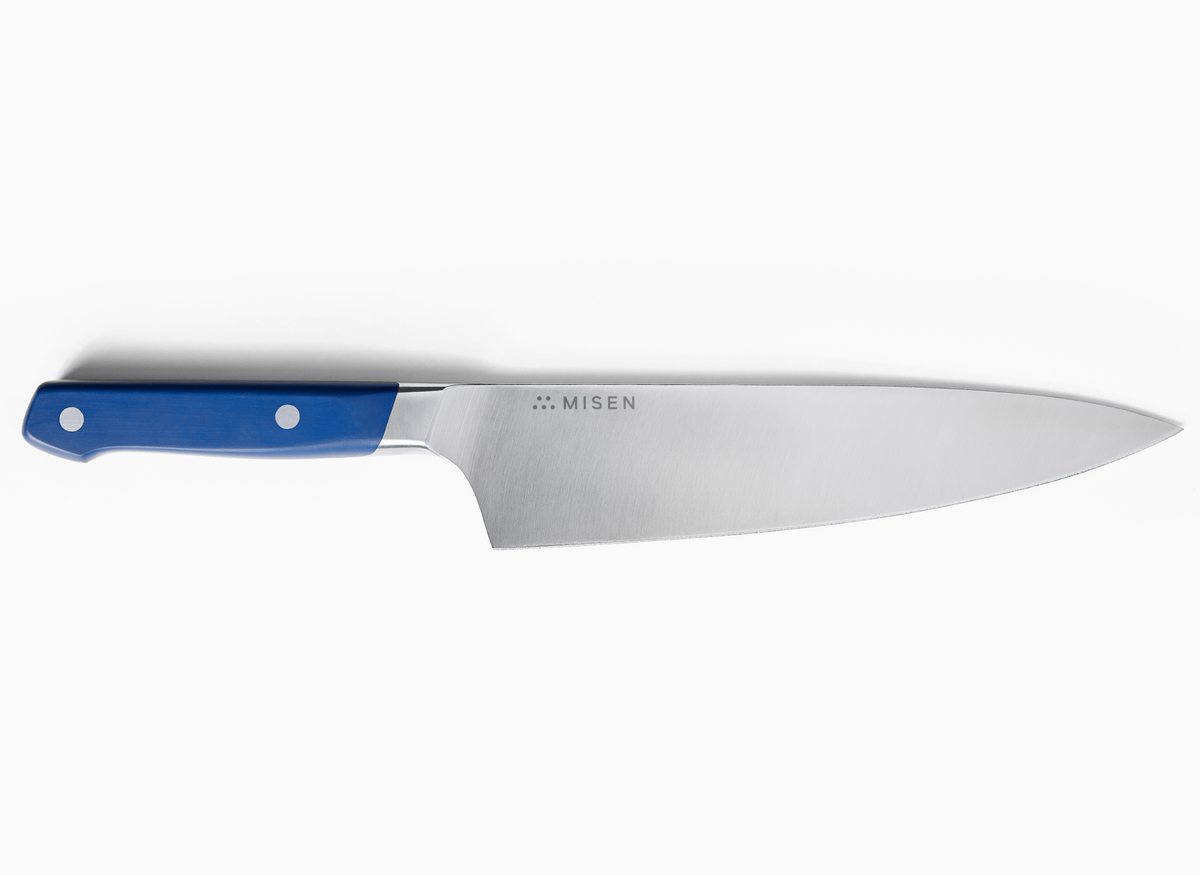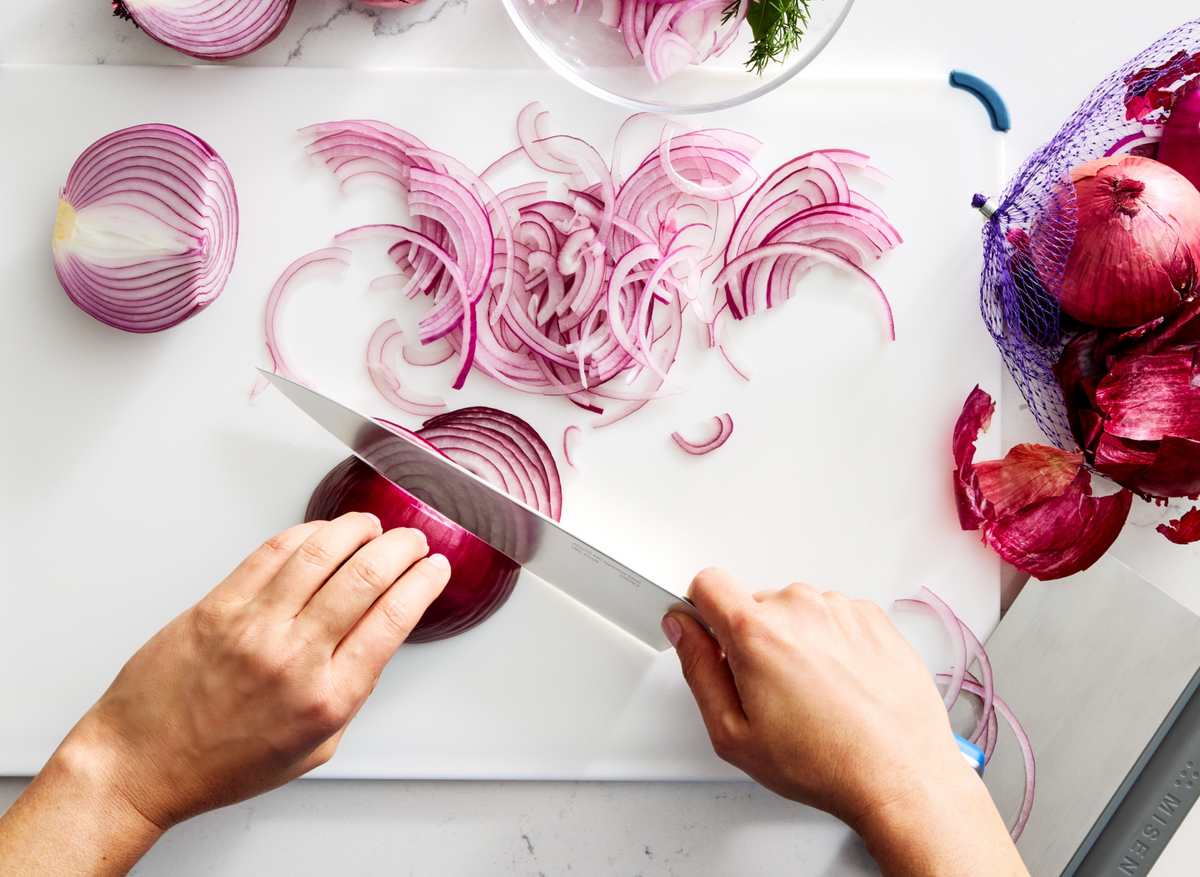A wok is a timeless, unique pan for all kinds of everyday cooking.
A wok is a timeless, unique pan for all kinds of everyday cooking.
Congratulations! You’re going to love your new wok. Here’s everything you need to know about making this one-of-a-kind pan your favorite cooking tool.
Congratulations! You’re going to love your new wok. Here’s everything you need to know about making this one-of-a-kind pan your favorite cooking tool.
It’s ready to use right out of the box. But the more you cook with it, the stronger — and more naturally nonstick — it will become.
A properly seasoned wok should feel smooth to the touch. If you notice rough, uneven, or sticky patches, you may need to scrub those away with a sponge and apply a new layer of seasoning.
Scratch or damage your seasoning? Don’t worry. You can always rebuild it. Your wok is indestructible and will last a lifetime.
Beyond stir-fries, it’s an excellent everyday tool for steaming, boiling, searing, frying, braising, and more.
You can usually just rinse, wipe it clean, and towel it dry.
A pan’s “seasoning” refers to the build-up of fats that bake into its metals over time. These layers of fats create a smooth surface that requires very little extra cooking fat to prevent food from sticking. It’s the same thing as a patina on a well-loved cast-iron pan: the more you cook with it, the stronger and more nonstick the pan becomes as it builds up more and more layers of fats.
By pre-seasoning the wok as part of our manufacturing process, we’ve established a strong base layer of seasoning for you. Then, its seasoning will continue to get stronger as you cook with it.
Yes! This Wok is oven-safe to 500º F / 260º C. But to best protect the silicone lining, we don’t recommend using the lid in the oven.
Small amounts of acidic ingredients — like wine or vinegar — are okay to use in the wok. But we recommend avoiding cooking large amounts of acidic foods (such as tomato sauce) in the wok, as these can cause the buildup of your seasoning to deteriorate.
Naturally seasoned carbon steel is a little different from a commercial nonstick coating. It's created by a build-up of fats that bake into the metal, making it more and more nonstick the more you cook with it. We recommend using some cooking fat when you cook with your wok, and it’s always a good idea to properly preheat the pan over medium heat before adding any fat or food.
Yes, the Wok is made with induction-compatible carbon steel and designed with a flat base that will work on any cooktop: gas, electric, ceramic, you name it.
Your wok’s seasoning may have deteriorated—but no big deal. Here’s what to do if you need to start building a new one.
Our factory uses a blended oil to create our wok’s pre-seasoning. It’s a combination of soybean, rapeseed, sunflower, peanut, rice, corn, sesame, and linseed oil.
It’s ready to use right out of the box. But the more you cook with it, the stronger — and more naturally nonstick — it will become.
We designed the Misen Dutch Oven to last a lifetime. While the enamel system is very durable, and can tolerate almost anything in the kitchen, we have a few suggestions that’ll keep your dutch oven working great for even longer.
How to Build and Maintain
Your Wok’s Seasoning
A properly seasoned wok should feel smooth to the touch. If you notice rough, uneven, or sticky patches, you may need to scrub those away with a sponge and apply a new layer of seasoning.
Scratch or damage your seasoning? Don’t worry. You can always rebuild it. Your wok is indestructible and will last a lifetime.
Cooking with Your Wok
Beyond stir-fries, it’s an excellent everyday tool for steaming, boiling, searing, frying, braising, and more.
Cleaning Your Wok
You can usually just rinse, wipe it clean, and towel it dry.
A pan’s “seasoning” refers to the build-up of fats that bake into its metals over time. These layers of fats create a smooth surface that requires very little extra cooking fat to prevent food from sticking. It’s the same thing as a patina on a well-loved cast-iron pan: the more you cook with it, the stronger and more nonstick the pan becomes as it builds up more and more layers of fats.
By pre-seasoning the wok as part of our manufacturing process, we’ve established a strong base layer of seasoning for you. Then, its seasoning will continue to get stronger as you cook with it.
Yes! This Wok is oven-safe to 500º F / 260º C. But to best protect the silicone lining, we don’t recommend using the lid in the oven.
Small amounts of acidic ingredients — like wine or vinegar — are okay to use in the wok. But we recommend avoiding cooking large amounts of acidic foods (such as tomato sauce) in the wok, as these can cause the buildup of your seasoning to deteriorate.
Naturally seasoned carbon steel is a little different from a commercial nonstick coating. It's created by a build-up of fats that bake into the metal, making it more and more nonstick the more you cook with it. We recommend using some cooking fat when you cook with your wok, and it’s always a good idea to properly preheat the pan over medium heat before adding any fat or food.
Yes, the Wok is made with induction-compatible carbon steel and designed with a flat base that will work on any cooktop: gas, electric, ceramic, you name it.
Your wok’s seasoning may have deteriorated—but no big deal. Here’s what to do if you need to start building a new one.
Our factory uses a blended oil to create our wok’s pre-seasoning. It’s a combination of soybean, rapeseed, sunflower, peanut, rice, corn, sesame, and linseed oil.
Welcome to the Misen Carbon Steel Wok Care Guide! In this essential guide, we will cover everything you need to know about caring for your new go-to cooking tool. From building and maintaining your wok's seasoning, cooking techniques, to proper cleaning practices, we've got you covered. With proper upkeep, your Misen wok will provide a lifetime of incredible cooking experiences. Our Misen Carbon Steel Wok comes pre-seasoned and ready to use right out of the box, but as you continue cooking with it, the seasoning will become stronger and more naturally nonstick. Cooking with your wok is not limited to just stir-fries; it's also an excellent tool for steaming, boiling, searing, frying, braising, and more. The Misen Wok is compatible with all types of stovetops, including induction, and oven safe up to 500 F. Keep in mind that it’s important to avoid cooking high-acid foods for long periods, which can strip away the wok’s seasoning. To clean your Misen Wok after use, it's crucial to handwash and towel dry and to avoid the dishwasher. Use only non-metallic scrubbers and brushes, always ensuring your wok is dried thoroughly to prevent rusting. Through this guide, we hope to empower you to make the most of your Misen Carbon Steel Wok, creating delicious dishes while maintaining its outstanding quality.
Welcome to the Misen Carbon Steel Wok Care Guide! In this essential guide, we will cover everything you need to know about caring for your new go-to cooking tool. From building and maintaining your wok's seasoning, cooking techniques, to proper cleaning practices, we've got you covered. With proper upkeep, your Misen wok will provide a lifetime of incredible cooking experiences. Our Misen Carbon Steel Wok comes pre-seasoned and ready to use right out of the box, but as you continue cooking with it, the seasoning will become stronger and more naturally nonstick. Cooking with your wok is not limited to just stir-fries; it's also an excellent tool for steaming, boiling, searing, frying, braising, and more. The Misen Wok is compatible with all types of stovetops, including induction, and oven safe up to 500 F. Keep in mind that it’s important to avoid cooking high-acid foods for long periods, which can strip away the wok’s seasoning. To clean your Misen Wok after use, it's crucial to handwash and towel dry and to avoid the dishwasher. Use only non-metallic scrubbers and brushes, always ensuring your wok is dried thoroughly to prevent rusting. Through this guide, we hope to empower you to make the most of your Misen Carbon Steel Wok, creating delicious dishes while maintaining its outstanding quality.





